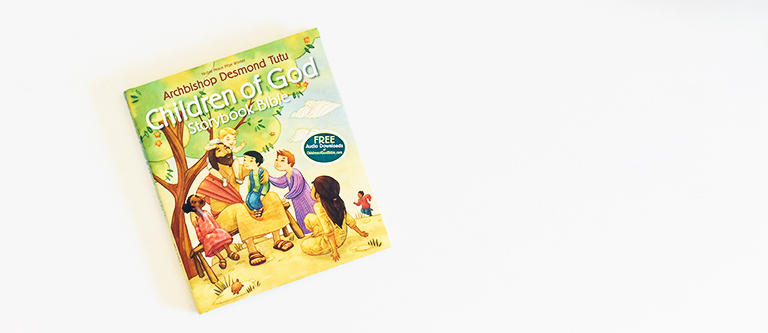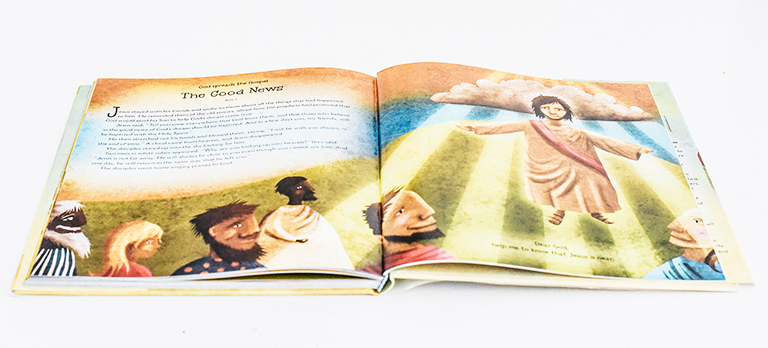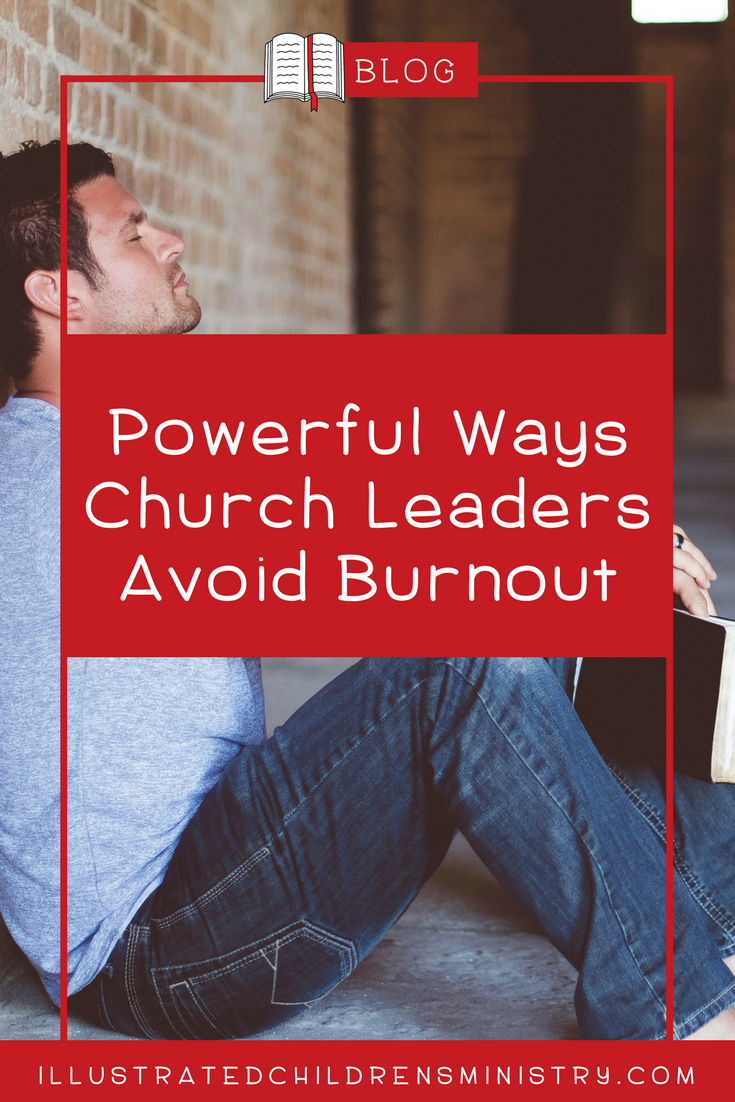Children of God Storybook Bible is one of so many children’s Bibles. It’s easy to feel overwhelmed by the variety and unsure which is best for your bookshelf. So, here at ICM, we’ve compiled our thoughts in this blog series where we’ll be reviewing some of today’s most popular children’s Bibles. Once you find your fave children’s Bible, check out our post on ways of reading scripture with your kids to get the most out of it!
Quick Facts about Children of God Storybook Bible
- 128 pages
- Author: Archbishop Desmond Tutu
- Illustrators: 20 renowned artists from around the world
- Storybook format (a retelling of some of the Bible)
- Age Range: 4-8 years old
A Closer Look
To begin, there’s no perfect choice for all children everywhere or even for your own child. Each children’s Bible is a mixture of aspects to love and those that invite palm to forehead moments. So, in this series of reviews, we’ll always include what we think to be the pros and cons of each Bible. And we’ll discuss whether or not we’d recommend it to our friends. So, let’s dive in and take a closer look at Children of God Storybook Bible.
Pros of Children of God Storybook Bible
Name Plate Included: It contains a nameplate for gifting it to a child. A parent, children’s director, teacher, or family member would appreciate this.
Engaging Illustrations: This children’s Bible includes 20 internationally recognized illustrators’ work that’s beautiful.
Inclusively Illustrated Characters: Desmond Tutu invited illustrators to depict their own heritage in the stories. As a result, biblical characters are not all culturally accurate. However, this is fundamentally different than depicting all characters inaccurately as Caucasian. For, here it is done with the purpose of intentional inclusion rather than unintentional exclusion. Archbishop Desmond Tutu strives in this work to tell all children we each have a place in God’s story. Thus, we’ve included this as a pro.
Table of Contents Included: It has a very clear table of contents, which makes finding stories easy.
Classic Stories Included: It includes all the classic stories you’d hope for from a children’s Bible.
Digestible Story Length: With the exception of a few 4-pagers, all stories are 2 pages. So, it’s easy to hold young readers’ attention and integrate reading into faith education.
Biblical Passages Cited: Each story gives the biblical passages from which the author drew. This raises biblical literacy and makes for easy cross-referencing.
Familiar Titles: The stories have titles that are easily correlated with those in the Bible.
Ending Prayers: Each story ends with a short prayer. They either thank God or ask for God’s help and reinforce a theme from the story.
Audio Versions Available: This children’s Bible is available on CD and Audible, which would be great for use in the car, classroom, or at home.
 Cons of Children of God Storybook Bible
Cons of Children of God Storybook Bible
Small, Obscured Page Numbers: First, the book’s page numbers are small, ultra-light, and printed over the illustrations. So, they can be difficult to see.
Gendered Language for God: Children of God Storybook Bible refers to the Divine as “he.” However, God is not male or female. All language for the Divine is metaphorical. Therefore, if we use one gender for God, then it follows that we would use all genders. If not, using non-gendered language for God is ideal. Most seminaries require this. Thus, there is no reason it shouldn’t be common practice in the pulpit and faith education of young ones.
Somewhat Deceptive Marketing: Zondervan placed a sticker on the front cover that says, “Free Audio Downloads at ChildrenofGodBible.com.” However, one is allowed only two free downloads out of the fifty-six stories in Children of God Storybook Bible. Readers may purchase the others.
Conclusion
To conclude, Children of God Storybook Bible has a lot going for it. First, it has a nameplate for easy gifting. Second, it has engaging and inclusive illustrations. Third, it has a table of contents for easy reference. Fourth, it includes all the classic stories, and they’re a digestible length. Fifth, it gives biblical passages for each story and uses familiar titles. Sixth, it offers short prayers with each story. Seventh, it has audio versions available.
Yet, Children of God Storybook Bible also possesses elements that could detract from it. First, its page numbers are hard to read, which makes finding stories challenging at times. Second, it uses only male language for God. Third, it includes a potentially misleading sticker on its front cover for free audio downloads.
Because we find this children’s Bible has far more pros than cons, we would recommend it. We would simply change the male language to be inclusive when reading aloud. And we’d use it as an opportunity to speak with children about it. For example, we’d discuss the power of our language, what it can communicate and why God is so often referred to as male.
We hope this review has been helpful and has given some food for thought. Share what children’s Bibles you have and love in the comments below!













